Castling game
This article explains how to play Castling game and details how you can solve it. The general rules of the Sudoku board 9×9 can be seen in the post The Sudoku Game, click here to go there. To play Castling, click here.
Castling is a Cross Game 21 game, easy and fast to play.

Its name comes from the famous chess move in which two pieces on the board change position at the same time.
In our game, castling takes place between 2 rows of a Sudoku board, as shown in the diagram below.
The starting point is a complete sudoku board with all its numbers and all its rules in compliance.
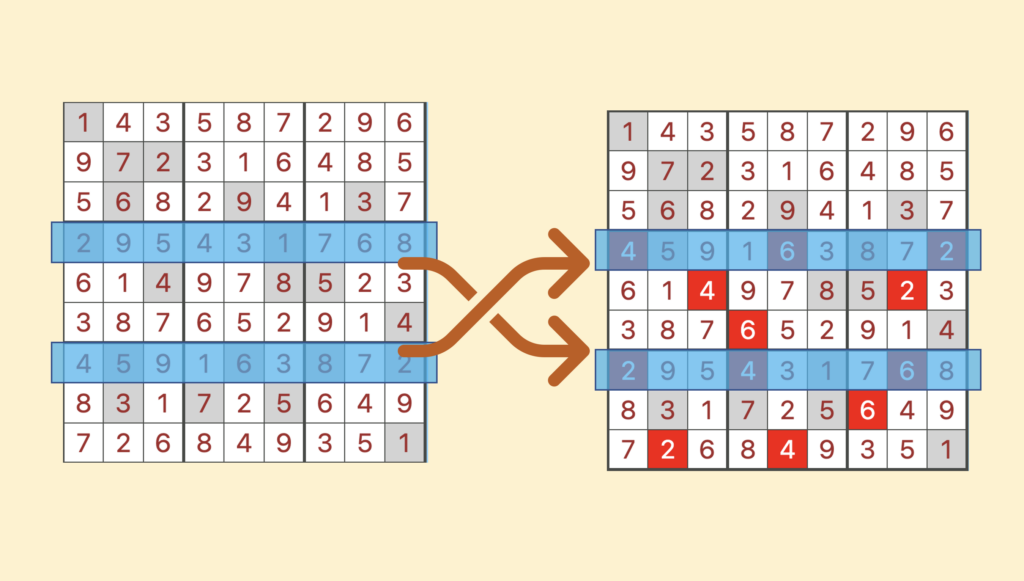
In this board, the position of two of its rows is modified, castling between them, as shown in the second box of the diagram.
As a consequence of this castling, duplicate number errors are generated in some Sudoku regions, which are shown with a red background.
The challenge of the game is to find and mark (touch or click) the two rows to generate a reverse castling that returns the Sudoku to its initial position without errors.
Menu options
The menu options in this fast and dynamic game are only three : Info or Blog, New, and Return.
The first option in the menu is Info or Blog, which directs you to this blog post, named “Castling game”, where it is explained how this game is and how it is solved.
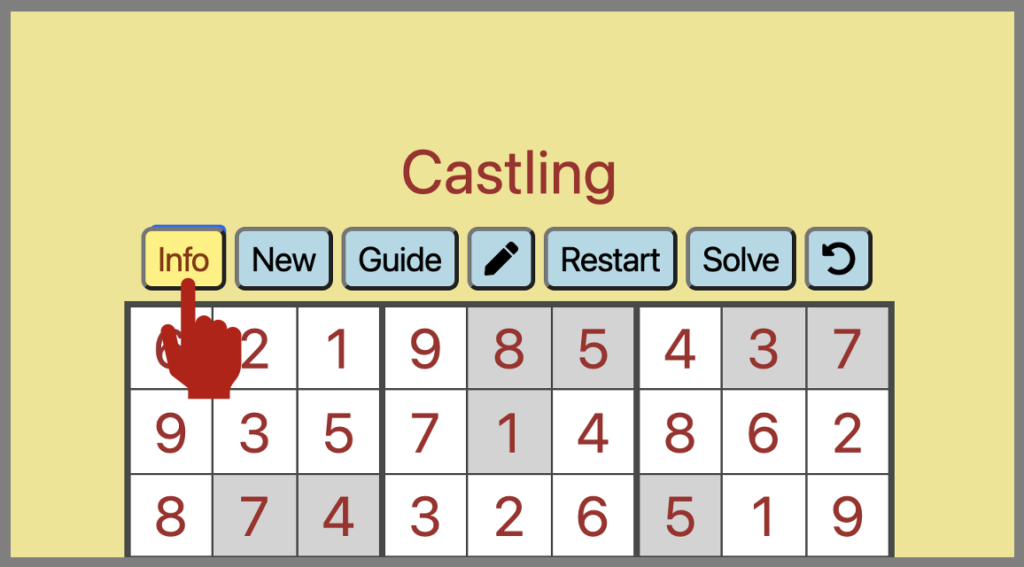


The second option in the menu is New, which allows you to leave the current game and start a new one of the same type.
The last option is Return, which will return you to the main games menu.
Errors in Castling
When changing the position of a complete row to another place on the board, it does not modify its content, nor the numbers that make it up, nor its position within the row.
Therefore, no in-row errors are caused by this move.
Moving from one row to another place will change the relative position of the numbers that make up each column, but not their content, so no errors are generated within the columns.
If there are no errors in rows or columns, the only option to generate errors is within the regions.
However, moving a row to another position within its same area (top, central or bottom) causes a reordering of the region numbers but no errors are generated.
Therefore the errors generated by castling occur within each region, when a complete row is moved to another area on the board.
Areas with errors
The errors occur in only 2 areas of the board, because only 2 rows are castled. There will always be a complete area without errors, as we will see in the following cases.
Type of solutions
there will be 3 ways to solve depending on how many rows contain errors in the areas where castling occurred. Type I will be when the two areas show errors in their three rows. Type II when one of the areas shows errors in only 2 rows. Type III when both areas show errors in only 2 rows.
Solving the game I
The most common case. Errors in the 3 rows of both areas involved. To solve the game, we have to find which rows have been castled. In the diagram we see the initial Sudoku (in the game we will not see it), and then we see the Sudoku with 2 castled rows.
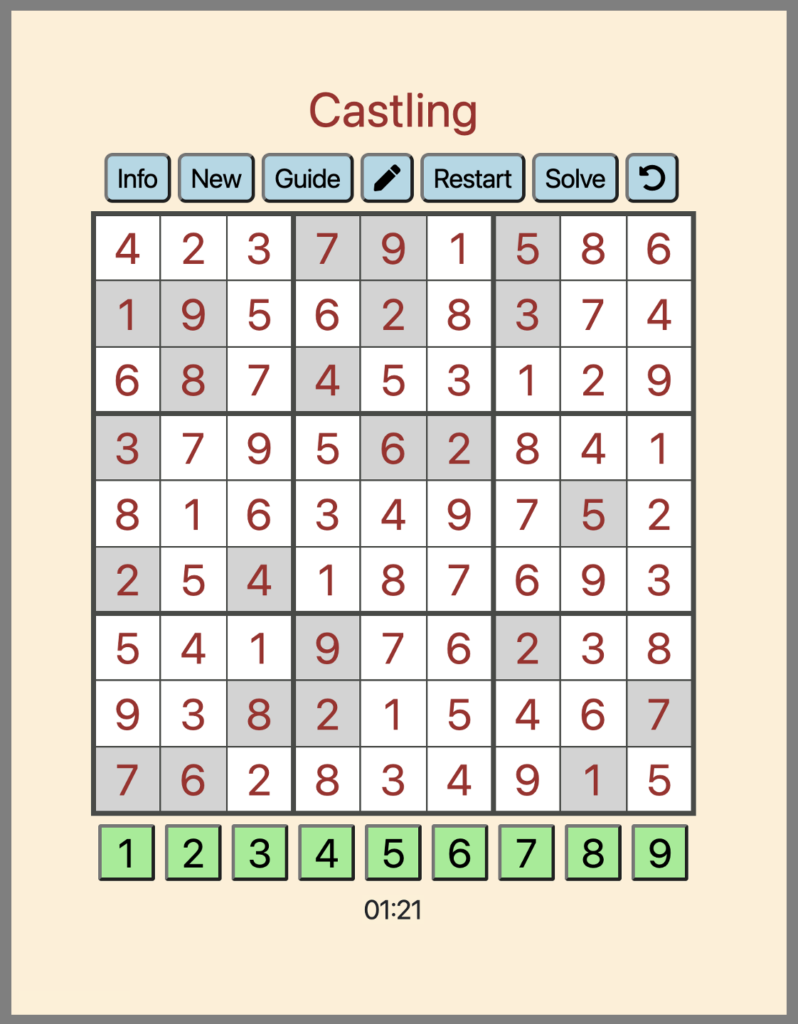

As we noted in the previous sections, errors occur within regions, in this case, in the the top and central area. A row from the top area was castled with another from the central area. Furthermore, in type I, both areas have errors in their three rows.
Checking the top area of the board, with rows 1-2-3 and regions 1-2-3.
There are conflicts in region 1, number 2 between rows 1-2, number 4 between rows 1-2.
There are conflicts in region 2, number 1 between rows 1-2, number 7 between rows 1-2.
There are conflicts in region 3, number 6 between rows 1-2 and number 9 between rows 2-3.
The row involved in all the conflicts is row 2. By covering this row in the diagram, we see that all the errors disappear. Row 2 was castled.

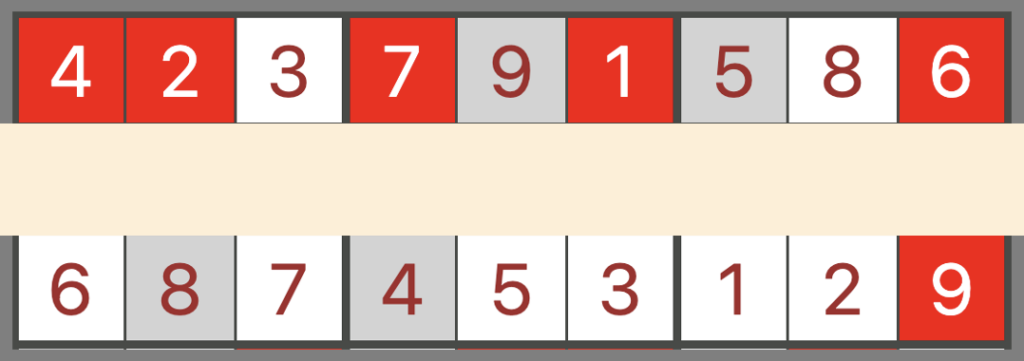
Reviewing the central area of the board, with rows 4-5-6 and regions 4-5-6.
There are conflicts in region 4, number 1 in rows 5-6 and number 9 in rows 4-6.
There are conflicts in region 5, numbers 2 and 6, both in rows 4-6.
There are conflicts in region 6, number 4 in rows 4-6 and number 7 in rows 5-6.
The row involved in all the conflicts is row 6. By covering this row in the diagram, we see that all the errors disappear. Row 6 was castled.


Finally we can see the board with castled rows, and the two rows identified as castled and that you must touch in the game.

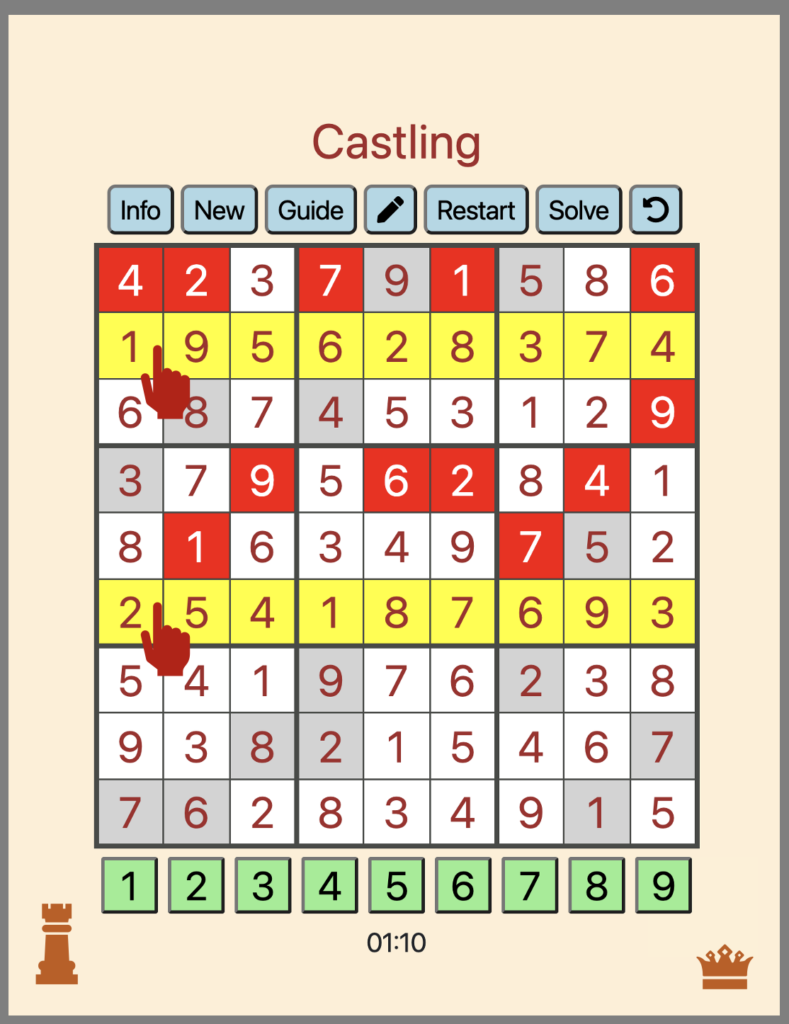
After touch or click, the system checks for errors and cleans them. The game has ended successfully.


Solving the game II
Not common case. In the type II, one of the areas have errors in only 2 rows.
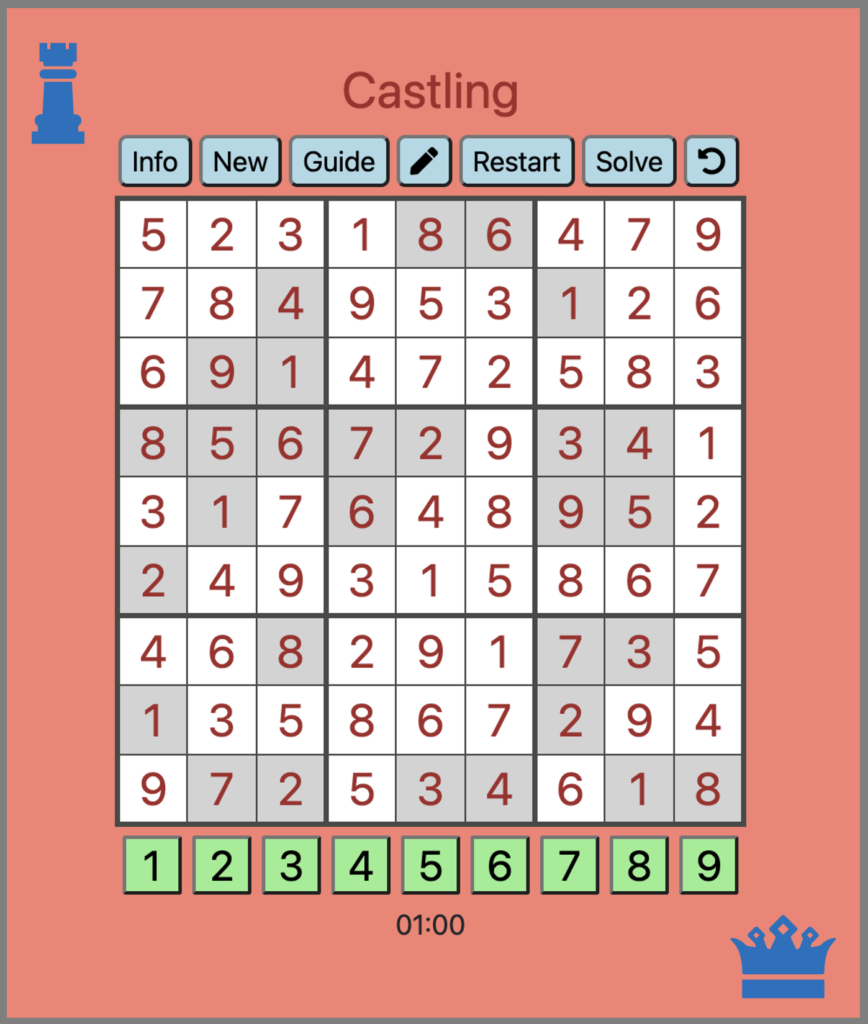
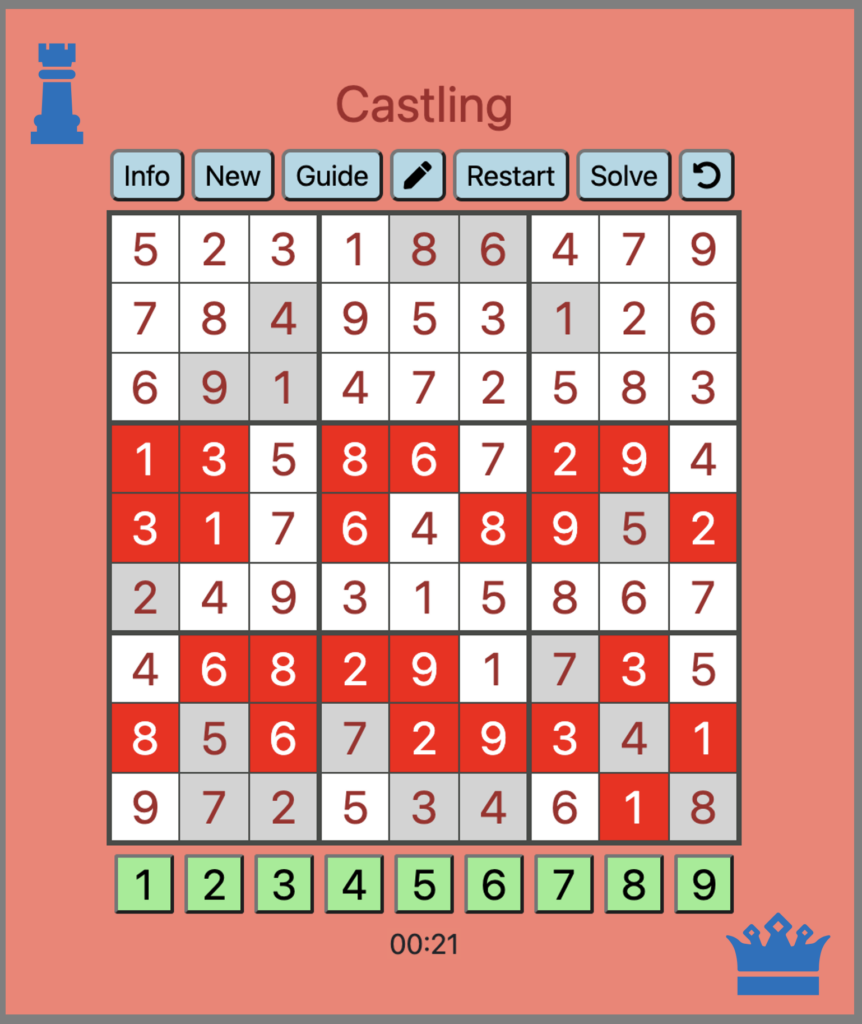
The problem here is that for the central zone with only two rows we cannot determine which one should move without also looking at which row will arrive from the other zone (the one below).
Then we look in the lower area for the row that must be moved. Row 8 is involved in all conflicts in this zone, so it must move.


Solving the dilemma of castling row 4 or 5 with row 8, the diagram shows us the options that would remain when joining the remaining rows in the central area. If you castle row 5, there are conflicts with the numbers 5, 7 and 4 in all 3 regions. Therefore, the correct castling is rows 4 and 8.


Solving the game III
Very rare case. In the type III, we have the 2 areas with errors in only 2 rows.
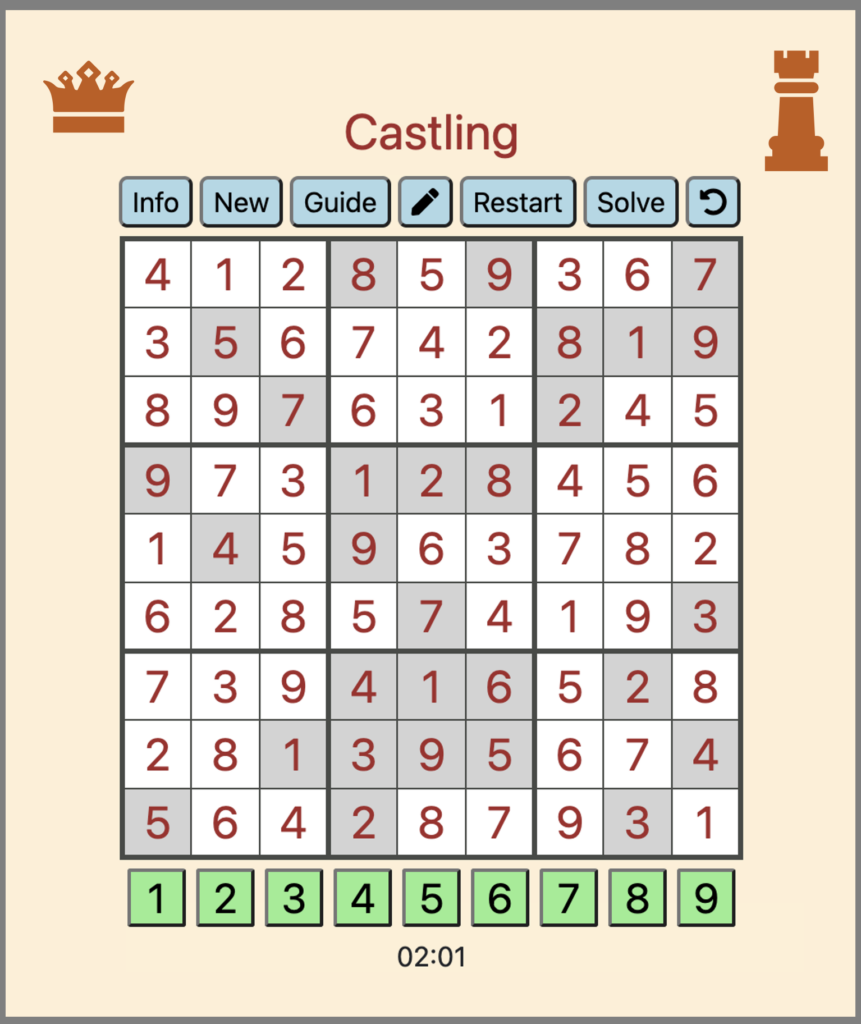
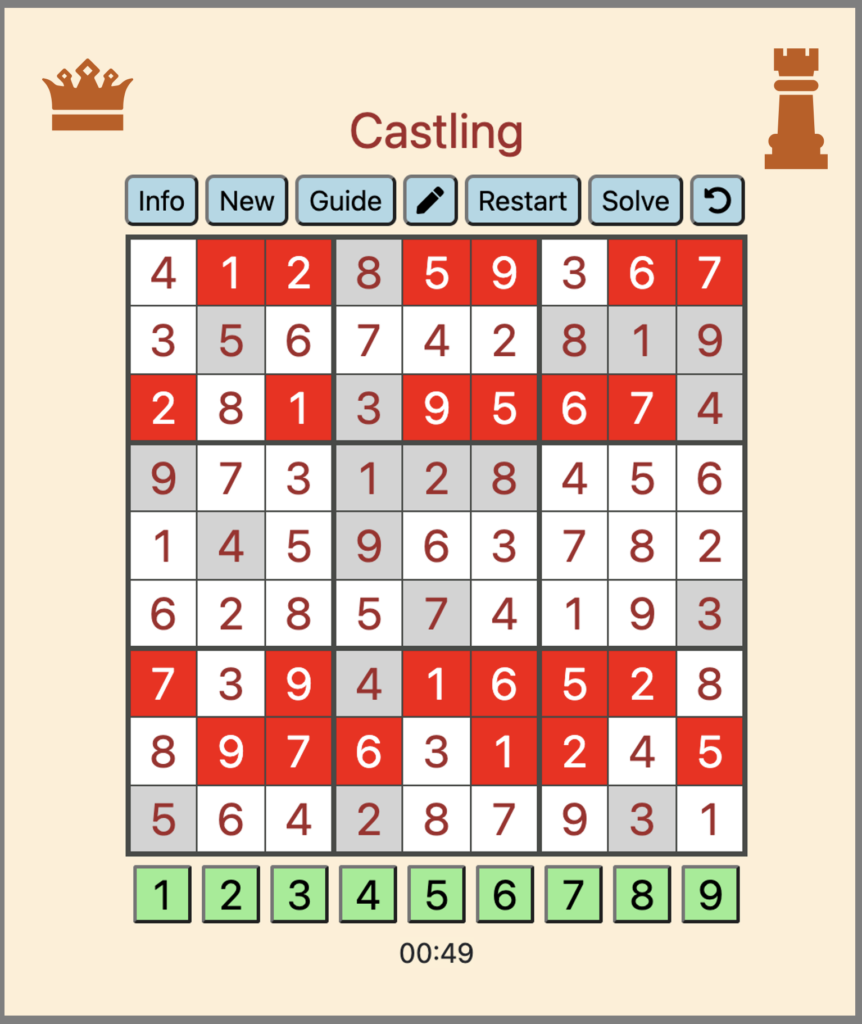
The problem here is that for both areas we cannot determine which one should move without also looking at which row will arrive from the other area.
The candidates for castling are rows 1 with 7, 1 with 8, 3 with 7, and 3 with 8. Four candidates to check.




Castling Row 1 with Row 7 in first image causes errors with numbers 3, 4 and 8.
Castling Row 1 with Row 8 in second image causes errors with numbers 8, 3 and 4.
Castling Row 3 with Row 7 in third image causes errors with numbers 3, 4 and 8.
Castling row 3 with row 8 in the fourth image does not cause any errors. So this is the correct castling


Loop
The game performs a loop with successive games accumulating increasing score each time, until a mistake is made. If you mark a wrong row, the game will castle and mark the wrong cells, allowing you to continue playing, but the score will return to zero.